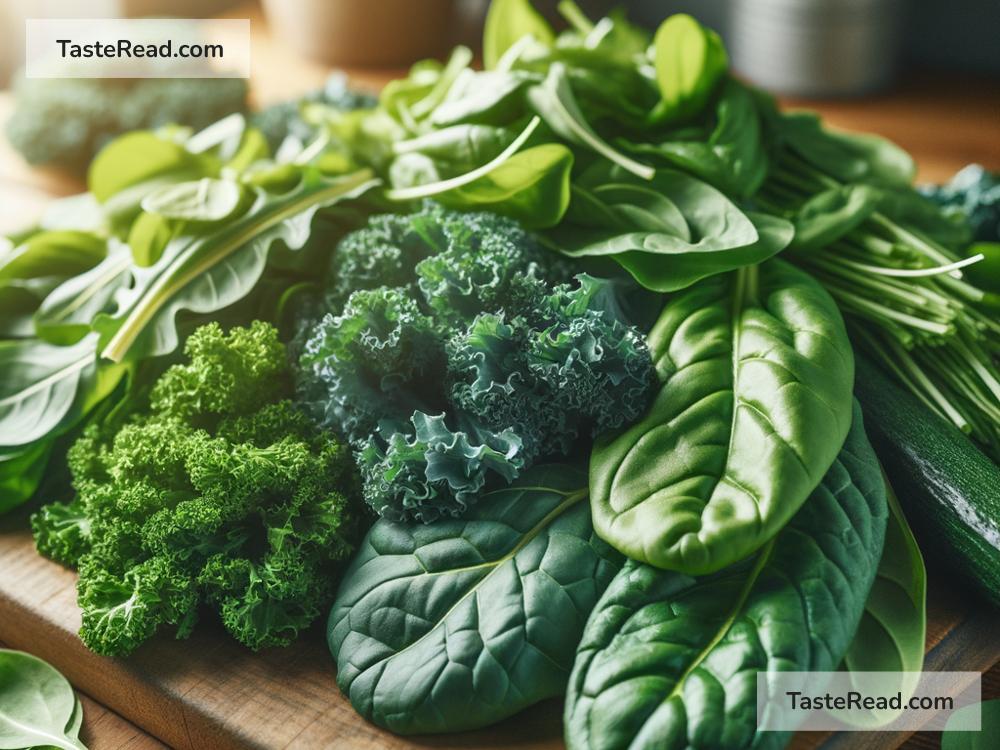The Role of Chlorophyll in the Green Taste of Leafy Vegetables
When we bite into leafy greens like spinach, kale, or lettuce, we notice a fresh, earthy taste that we often call the “green taste.” But have you ever wondered where that distinct flavor comes from? The answer lies in chlorophyll, a remarkable natural compound found in plants. Chlorophyll doesn’t just give leafy vegetables their vibrant green color—it also plays a key role in shaping their taste.
Let’s take a closer look at chlorophyll, why it’s important in the plant world, and how it affects the taste of leafy vegetables we enjoy in salads, smoothies, and cooked dishes.
What Is Chlorophyll?
Chlorophyll is a pigment that exists in the cells of all green plants. It’s responsible for the rich, green color you see in vegetables like spinach, chard, and arugula. Chlorophyll’s main job is essential to life on Earth: it helps plants capture energy from sunlight through a process called photosynthesis. During photosynthesis, plants use sunlight to convert carbon dioxide and water into energy-rich compounds like sugars—essentially, chlorophyll allows plants to create their own food.
But chlorophyll isn’t just important for plants—it also has benefits for humans. It’s rich in vitamins, minerals, and antioxidants, offering potential health benefits when included in our diets.
How Chlorophyll Influences the “Green Taste”
The flavor of leafy green vegetables is a mix of different elements: natural sugars, acids, and unique compounds like chlorophyll. Chlorophyll contributes to what we often describe as a fresh, grassy, or slightly earthy taste. This flavor is closely tied to the plant’s natural environment and its role in photosynthesis.
When you chew leafy greens, you’re essentially tasting the essence of the plant’s connection to sunlight and soil. Chlorophyll itself has a mildly bitter undertone, which is why some vegetables, like kale, may taste slightly bitter when eaten raw. However, this bitterness isn’t overwhelming—it’s balanced by other natural compounds in the vegetable.
Other Compounds That Work With Chlorophyll
While chlorophyll shapes the green taste, it doesn’t work alone. Leafy vegetables contain other compounds that influence their flavors, including:
-
Glucosinolates: Found in greens like mustard, kale, and collard greens, these compounds give vegetables a sharp, pungent taste. Glucosinolates can be bitter or spicy, adding complexity to the green flavor.
-
Carotenoids: These pigments contribute to sweetness and mild earthiness in greens. Even though carotenoids are usually yellow or orange, they exist in leafy vegetables alongside chlorophyll and enhance their flavor.
-
Organic Acids: The tangy or sour flavors in some greens come from natural acids like citric and oxalic acids. These pair with chlorophyll to balance flavor profiles.
Together, these compounds create the unique taste of leafy greens, with chlorophyll often taking center stage as the primary source of the “green” taste.
Cooking and Chlorophyll: How Heat Changes Flavor
If you’ve ever cooked leafy greens, you may have noticed that their taste changes after cooking. This is because heat alters the chemical structure of chlorophyll. When greens are boiled, sautéed, or baked, the chlorophyll molecules break down into smaller components, and their vivid green pigments may fade to olive-green or brown. Alongside this visual change, the earthy taste of chlorophyll becomes less pronounced, allowing other flavors to come forward.
For example, kale’s bitterness softens when cooked, and spinach develops a mild sweetness. This is why many people find cooked greens more palatable than raw ones. However, overcooking leafy greens can lead to a mushy texture and overly muted flavors, so it’s best to cook them just enough to retain some freshness.
Health Benefits of Chlorophyll: More Than Just Taste
Chlorophyll doesn’t just affect flavor—it also contributes to the nutritional value of leafy vegetables. This natural pigment is packed with antioxidants, which help protect cells from damage caused by free radicals. Some studies suggest that chlorophyll can support digestive health, improve skin, and even assist in detoxification.
In addition, leafy greens rich in chlorophyll are an excellent source of vitamins A, C, and E, as well as iron and magnesium. These nutrients are essential for maintaining healthy bones, boosting immunity, and improving energy levels. So when you eat leafy greens, you’re not just enjoying their green taste—you’re also fueling your body with powerful nutrients.
How to Enjoy Chlorophyll-Rich Foods
To make the most of chlorophyll’s flavor and nutritional benefits, try incorporating fresh greens into your meals. Here are a few ideas:
- Add spinach, kale, or arugula to smoothies for a nutrient boost.
- Toss fresh leafy greens into salads with olive oil and lemon juice for a refreshing side dish.
- Steam or sauté greens lightly to retain their texture and flavor.
- Blend blanched greens into soups for a vibrant, hearty meal.
Conclusion
Chlorophyll is the unsung hero of leafy vegetables, bringing not only their beautiful green color but also their unique flavor and health benefits. Its role in shaping the green taste reminds us of the intricate relationship between plants and their environment. Next time you sit down to enjoy a crisp salad or a warm serving of sautéed spinach, take a moment to appreciate the amazing work of chlorophyll—and how it connects us to the natural world.


